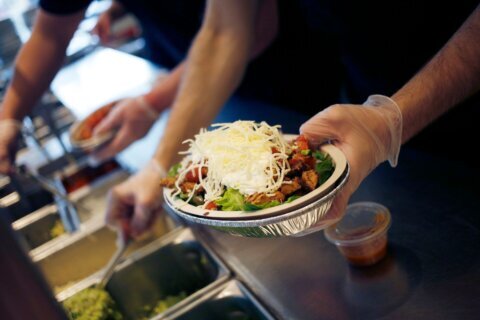Even though I’m a dietitian, I still scream for ice cream, gelato and other refreshing frozen treats — especially on sweltering summer days. I’ve always noticed that eating a scoop of ice cream, froyo or my favorite novelty (ice cream sandwiches, anyone?) instantly takes me back to my childhood. I’m surely not alone: Research has found that food has the ability to trigger powerful memories.
The problem? Ice cream and other frozen desserts can put a dent in your daily calorie, saturated fat and sugar budget. To avoid the pitfalls of sweet summertime treats, use these tricks from registered dietitians to enjoy frosty delights without freezing your health goals:
1. Find the healthiest licks.
Some super-premium and premium ice creams pack in more than 250 calories and 11 teaspoons (or 44 grams) of sugar per half-cup serving. The reason: They have more butterfat and less air whipped into them, so they contain the most calories (not to mention, they’re the most expensive cartons you can buy).
The healthiest ice cream and frozen treats, on the other hand, have less than 200 calories and 4 teaspoons (or 16 grams) of sugars per half-cup serving. In fact, frozen yogurt is almost always lower in calories, fat and added sugar than ice cream. Plus, the “light,” “reduced-fat” or “slow-churned” versions have fewer calories than regular ice cream. Some of the healthiest licks nutritionists recommend include Edy’s and Dreyer’s Slow-Churned, Breyer’s Light and Menchie’s frozen yogurt.
[See: In Pictures: 10 Healthy Desserts — and They’re Tasty, Too.]
2. Eat like a kid again.
The key to eating ice cream is to keep the portion in check. If you’re at an ice cream shop, ask for the smallest cone — even the kid’s cone — to keep your serving to about a half cup. And it’s important to note that the “small” cups sold at ice cream and yogurt shops today are closer to a cup rather than a half cup. Need proof? Here’s the scoop: A Dairy Queen kid’s cone has 170 calories and 18 grams of sugar, while the small cone has 60 more calories and 7 additional grams of sugar. Also, avoid candy or nut toppings; each can add 50 to 100 calories to your dessert.
3. Opt for high-protein, low-sugar ice cream.
Halo Top may be the answer to your prayers if you’ve been hoping to find an ice cream that won’t derail your diet. Registered dietitians gush about its creaminess and high protein and fiber counts, along with its minimal amount of added sugar. “A half cup has 5 to 6 grams of protein, 3 grams of fiber and around a 1/2 teaspoon of sugar,” according to registered dietitian Katherine Brooking. “The combination of protein and fiber makes it a satisfying dessert, rather than simply empty calories.” A pint of Halo Top will set you back 240 to 360 calories compared to 1,000 calories in a pint of Ben & Jerry’s or Haagen-Dazs. Grab your spoon!
4. Freeze your own froyo.
Frozen yogurt usually has less unhealthy saturated fat, fewer calories and more protein and calcium than ice cream, but not all froyos are created equal. A half cup of store-bought froyo generally has about 100 to 120 calories and 4 to 6 grams of protein, while soft serve brands like Pinkberry and Red Mango range from about 80 to 200 calories per half-cup serving. Rule of thumb: Be sure to read the nutrition facts to know what you’re getting.
But keep in mind that it’s easy to whip up healthy, homemade froyo — all you’ll need is nonfat or low-fat Greek yogurt and your favorite fresh or frozen fruit. (Honey or agave is optional.) Process the ingredients in a blender until smooth, then freeze for 30 to 45 minutes before serving. Not only will your DIY froyo pack in more protein, calcium and potassium than store-bought options, it will also be lower in added sugars. For inspiration, try this recipe for strawberry banana frozen yogurt from Chicago-based registered dietitian Deborah Davis.
[See: Unusual Uses for Greek Yogurt.]
5. Indulge in a Greek yogurt bar.
Greek yogurt bars are perfectly portioned to keep calories in check and are made with protein-rich Greek yogurt containing live and active yogurt cultures. The best licks: Atlanta-based registered dietitian Cheryl Orlansky recommends Yasso Frozen Greek Yogurt bars that have 5 grams of protein and 80 to 130 calories per bar. Just steer clear of the most decadent flavors, such as peanut butter cup or coffee chocolate chip, to keep calorie counts down.
6. Suck on fruit and veggie pops.
Perfectly-portioned frozen pops made with veggies, fruits or both are the most calorie-conscious frozen treats — they weigh in at less than 100 calories each and most are made with lots of real fruit and vegetable juice with little or no added sugars. And since they’re made with real juices, most of these pops can serve as a good source of vitamins A and C. For the best licks, check out options from Outshine and Fruttare.
[See: 9 Ways to Actually Make Eating Well Fun This Summer.]
7. Satisfy your sweet tooth with skinny (ice cream) sandwiches.
Ice cream sandwiches are in! Not only are they taking up more real estate in the cases at your local supermarket, food trucks in Los Angeles and other metro areas are selling gourmet ice cream sandwiches made with fresh-baked cookies and local creamery ice cream. While a handcrafted sammie can set you back 500 calories or more, portion-controlled supermarket options can be delicious calorie bargains. The best store-bought ice cream sandwiches include Skinny Cow (with 150 calories) and non-dairy Tofutti Cuties (with 130 calories and 9 grams of sugar).
Editor’s note: The author has no affiliations with any of the brands mentioned.
More from U.S. News
8 Ways to Stay Hydrated This Summer Without Drinking Water
5 Healthy — and Tasty — Smoothie Ingredients
11 Wonderful Ways to Use Watermelon
The Healthiest Ice Creams and Frozen Desserts originally appeared on usnews.com







